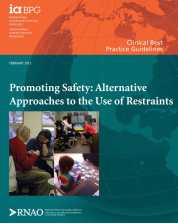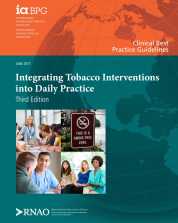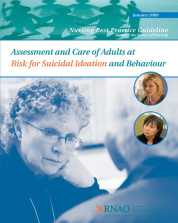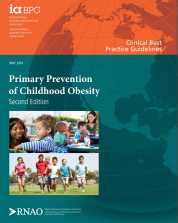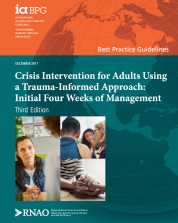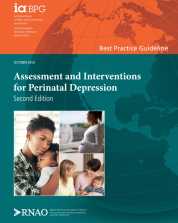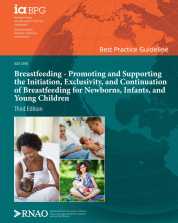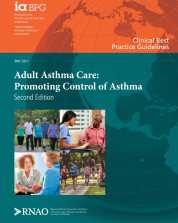The purpose of this best practice guideline (BPG) is to provide evidence-based recommendations for registered nurses (RNs) and registered practical nurses (RPNs) related to the care of individuals who are at risk for behaviours that may result in harm to self/others and lead to the possible use of restraints (physical, chemical, environmental). Unless otherwise indicated in the guideline, the discussion focus is on physical restraint.
The purpose of this best practice guideline (BPG) is to provide best practices for tobacco interventions for nurses and other health-care providers across all care settings, with evidence-based recommendations related to assessment and interventions for adults who use tobacco.
The purpose of this best practice guideline (BPG) is to provide nurses with recommendations, based on the best available evidence, related to the assessment and management of adults at risk for suicidal ideation and behaviour.
The purpose of this best practice guideline (BPG) is to provide nurses across all practice settings with evidence-based practice, education, system, organization and policy recommendations for the primary prevention of obesity in infants, preschool, and elementary-school-aged children.
The purpose of this best practice guideline is to focus on how nurses and the interprofessional team can provide effective trauma-informed crisis interventions (immediately and to up to four weeks post-crisis) in adults (18 years and older) in order to optimize evidence-based practices and clinical outcomes. The guideline is applicable in all practice settings and promotes consistent, evidence-based response and care.
The purpose of this best practice guideline (BPG) is to present evidence-based recommendations for nurses and the interprofessional team across all care settings to enhance the quality of their practices to support the reduced incidence of perinatal depression through the implementation of five components of care: routine screening, assessment, prevention, coordinated interventions, and evaluation.
The purpose of this best practice guideline (BPG) is to enhance the capacity of nurses, the interprofessional team, peers, policy-makers, and employers to meet the needs of breastfeeding persons, their healthy term newborns, infants, and young children, and their partners, family, and support network.
The purpose of this best practice guideline (BPG) is to provide nurses and other health-care providers with evidence-based recommendations of foundational asthma care for adults with a diagnosis of asthma.
The purpose of this best practice guideline (BPG) is to provide nurses (nurse practitioners, registered nurses, registered practical nurses and nursing students) and other members of the interprofessional team with evidence-based recommendations and resources related to the insertion, assessment and maintenance of vascular access devices (VADs) in the infant (0–1 year), pediatric (1–18 years) and adult populations (18 years and older).
The purpose of this best practice guideline (BPG) is to provide nurses and the interprofessional team with evidence-based recommendations for the most effective strategies to support adults (18 years and older) who anticipate or live with an ostomy that will:
(a) promote self-management,
(b) enhance access and delivery of care, and
(c) lead to positive health outcomes.
